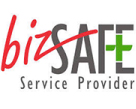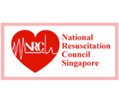SAFETY & HEALTH MANAGEMENT SYSTEMS AUDITS
As per Regulation 9 of WORKPLACE SAFETY AND HEALTH (SAFETY AND HEALTH MANAGEMENT SYSTEM AND AUDITING) REGULATIONS 2009, it shall be the duty of the occupier of following workplaces to appoint a workplace safety and health auditor to audit the safety and health management system of the workplace at a frequency as specified below.
| Any worksite with a contract sum of $30 million or more |
At least once every 6 months |
| Any shipyard in which 200 or more persons are employed |
At least once every 12 months |
| Any factory engaged in the manufacturing of fabricated metal products, machinery or equipment and in which 100 or more persons are employed |
At least once every 12 months |
| Any factory engaged in the processing or manufacturing of petroleum, petroleum products, petrochemicals or petrochemical products |
At least once every 24 months |
| Any premises where the bulk storage of toxic or flammable liquid is carried on by way of trade or for the purpose of gain and which has a storage capacity of 5,000 or more cubic metres for such toxic or flammable liquid |
At least once every 24 months |
Any factory engaged in the manufacturing of -
- fluorine, chlorine, hydrogen fluoride or carbon monoxide; or
- synthetic polymers
|
At least once every 24 months |
| Any factory engaged in the manufacturing of pharmaceutical products or their intermediates |
At least once every 24 months |
| Any factory engaged in the manufacturing of semiconductor wafers |
At least once every 24 months |
The audit methodology includes document review, site inspection and interview of key personnel. The man days required for audits will vary according to audit criteria adopted for different types of workplaces.
The SHMS audit will be conducted in accordance with the relevant WSH legislation and guidelines set out for each industry.
The audit will be conducted by MOM Approved WSH Auditors employed by MOM Approved WSH Auditing Organization.
AUDIT OBJECTIVES:
- Unified assessment method in term of standardisation of audit checklist and adoption of a common audit scoring system. This would enhance the consistency in the auditing process and allow cross comparison of worksites in terms of the capabilities in managing safety and health risk.
- Mechanism to profile the maturity level for each element of the SHMS in a worksite. With availability of the maturity profile, the management of the worksite could systematically focus its attention to improve the weaker elements in order to elevate the overall maturity of their SHMS to manage safety and health risk.
- Determine whether organization's WSH Management System, or parts of it, conforms to audit criteria;
- Determine the ability of the organization's WSH Management System to ensure the organization meets applicable statutory, regulatory and contractual requirements;
- Determination of the effectiveness of the WSH Management System to ensure the organization can reasonably expect to achieving its specified objectives;
- As applicable, identification of areas for potential improvement of the WSH Management System.
AUDIT CRITERIA:
The audit will evaluate the SHMS based on the WSH Act and its subsidiary legislation, as well as the following documents used as audit criteria:
| Type of Industry |
Reference Standard / Guide |
| Shipyards |
WSH Manual for Marine Industries published by WSH Council |
| Construction Worksites with Contract Sum less than $30 Million |
SS506-Part 1 OSH Management System (or) CP79 Safety & Health Management Systems |
| Metalworking Factory |
SS506-Part 1 OSH Management System (or) Guidelines on Implementation of Safety Management System for Metalworking Industry |
| Semiconductor Wafer Fabrication Plant |
SS506-Part 3 OSH Management System - Requirement for Chemical Industry |
| Oil refinery or petrochemical plant |
SS506-Part 3 OSH Management System - Requirement for Chemical Industry |
| Pharmaceutical Plant |
SS506-Part 3 OSH Management System - Requirement for Chemical Industry |
| Bulk Storage Terminal |
SS506-Part 3 OSH Management System - Requirement for Chemical Industry |
NORMATIVE REFERENCES:
- WSH Act
- Relevant WSH Subsidiary Legislations
- WSH (Safety & Health Management Systems and Auditing) Regulations 2009
- Fire Safety (Petroleum & Flammable Materials) (Amendment) Regulations 2015
- Relevant Approved Singapore Standards and Codes of Practices
- Ministry of Manpower Terms and Conditions for WSH Auditing Organizations
- CT 17 SAC Criteria for Accreditation of Auditing Organisations
- Reference Standard / Guide stated above based on type of industry
- Safety & Health Management Systems Manual for organization
- Safety & Health Procedures for above Organization
AUDIT SCOPE:
Audit Scope covers all the work activities at the work processes and activities in organization.
AUDIT METHODOLOGY:
- Audit Preparation;
- Conducting the opening meeting;
- Familiarization Tour of Workplace.
- Communicating during the audit;
- Collecting and verifying information;
- Review of Documents / Records
- Physical Inspection of Workplace
- Interview of Key Personnel
- Generating audit findings;
- Preparing audit conclusions;
- Conducting the closing meeting;
- Preparation and Submission of Audit report
ROLES & RESPONSIBILITIES OF AUDIT TEAM:
Lead Auditor:
- Lead the audit team.
- Conduct opening meeting covering all relevant items as per auditing standard.
- Review the results of previous audits, if any.
- Ensure that audits are carried out according to requirements stipulated by Regulatory Authorities.
- Assign the tasks to audit team.
- Keep the client informed of audit progress.
- Reassign work as needed between the audit team members and periodically communicate the progress of the audit and any concerns to the client
- Where the available audit evidence indicates that the audit objectives are unattainable or suggests the presence of an immediate and significant risk (e.g. Safety), the audit team leader shall report this to the client.
- Review with the client any need for changes to the audit scope that becomes apparent as on-site auditing activities progress.
- Attempt to resolve any diverging opinions between the audit team and the client concerning audit evidence or findings, and record unresolved points.
- Review audit findings with his team.
- Conduct closing meeting covering all relevant items as per auditing standard.
- Present audit conclusions during closing meeting.
- Consolidate the audit report and send to August International Pte Ltd
Co-Auditor:
- Conduct audits according to requirements from Regulatory Authorities.
- Carry out audits as per audit itinerary.
- Discuss audit findings with lead auditor prior to closing meeting.
- Follow the directions given by lead auditor.
- Assist the lead auditor in presenting findings on clauses / elements audited by him during closing meeting.
Auditee(s) / Guide:
- Establishing contacts and timing for interviews;
- Arranging visits to specific parts of the site or organization;
- Ensuring that rules concerning site safety and security procedures are known and respected by the audit team members;
- Witnessing the audit on behalf of the client;
- Providing clarification or information as requested by an auditor.
Technical Experts:
Technical Experts will be deployed as necessary for audits.
Testimony of Audit Conducted:
A testimony will be issued to the audited organization stating the company name, location, audit criteria, audit date and auditing organization name.
Processes for handling requests for information and complaints:
If audited client has any request for information and complaints, he can email to august-hr@8ipl.com.sg stating clearly client name, identity & contact details of person making the request and details of complaints.





